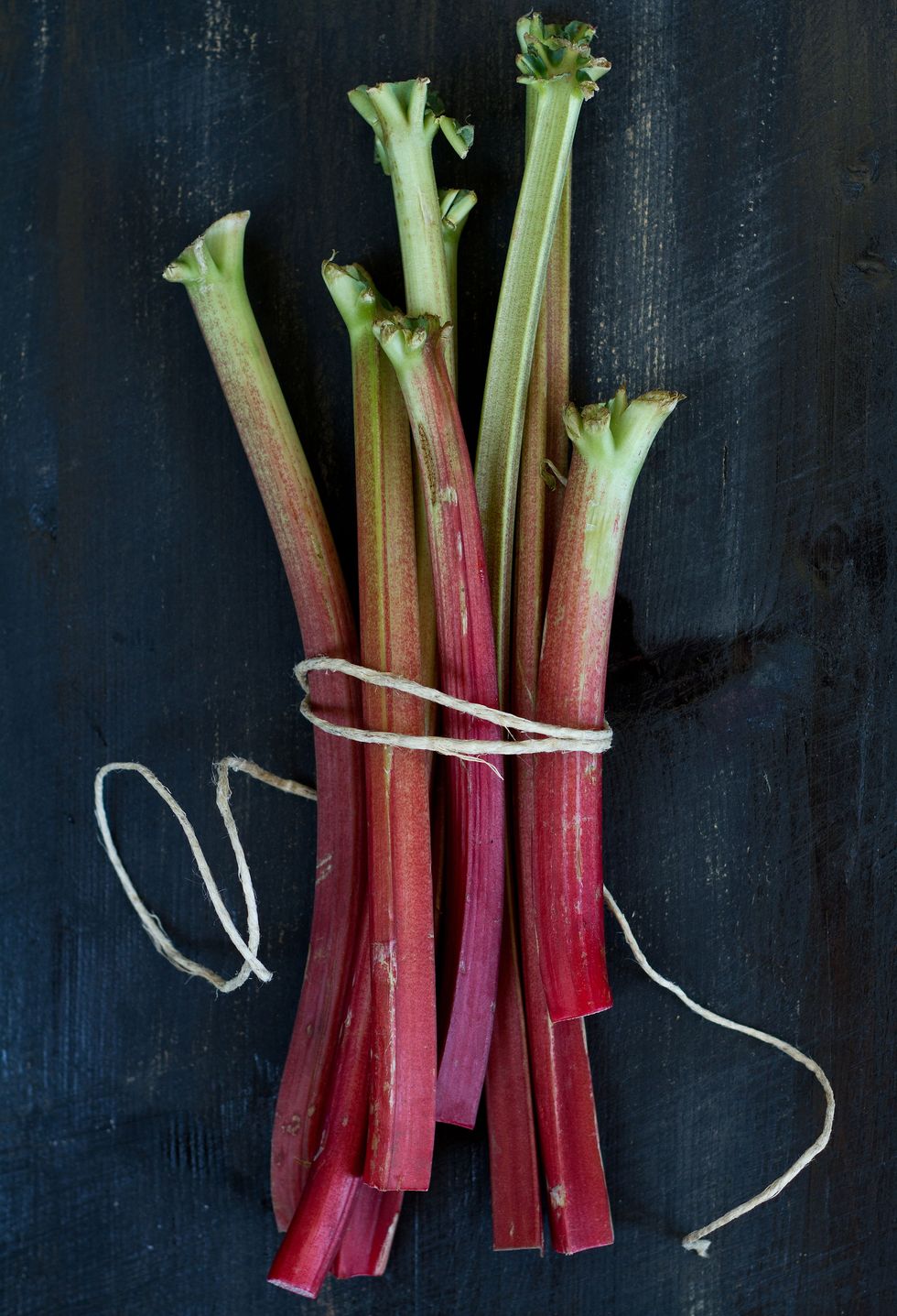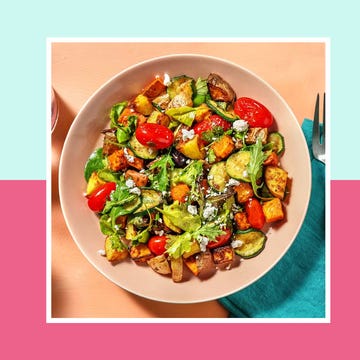Rhubarb season is short but sweet, so freezing this wonderfully tart vegetable is a great way to enjoy it all year round.
In the UK, the season runs from April through to July, however, forced rhubarb season can begin in January up until April.
Forced rhubarb elongates the season since when the first frosts begin, the plants are moved indoors to a much warmer and darker environment (and are even picked by candlelight) which protects them from the colder weather and results in a sweeter and softer plant. These shoots grow so quickly that you can even hear them 'squeak' as they shoot up.
What to read next
Why freeze rhubarb?
Whether you have a glut of seasonal rhubarb (or forced rhubarb), it makes sense to freeze a load for future use (especially if you manage to grow or buy a particularly pink and sweet batches that's not always easy to come by).
Happily, these gorgeous pink sticks freeze very well with minimal effort – so you're never too far from a crumble, pie or pavlova that will brighten up any day!
How to prepare rhubarb for freezing
Make sure your rhubarb is fresh looking, crisp and blemish free. If the stalks are fibrous, peel off the tough outer fibres and remove any leaves as these are poisonous to consume. Don't forget to clean the stalks under cold running water to remove any dirt or grime.
Can rhubarb be frozen without blanching?
Yes, absolutely! Once washed, cut the lengths into rough 2.5cm pieces. Space out on a baking sheet lined with baking parchment and freeze until frozen (around 2hr). Then decant into a freezer bag or freezer-proof container and freeze for up to 3 months.
How to freeze blanched rhubarb
Before freezing rhubarb, you can blanch it to help preserve colour and flavour – this is recommended if you're planing on keeping the rhubarb frozen for more than three months.
How to blanch your rhubarb for freezing
- Cook your cleaned and chopped rhubarb in a pan of boiling water for 1min.
- Drain and immediately plunge into iced water to stop the cooking and set the colour by locking in the anthocyanins. Drain again and spread on kitchen paper to dry completely.
How can I use frozen rhubarb?
Next comes another decision – will you want to use smaller portions of your frozen rhubarb over a period of time, or use the whole amount in one go?
If the latter, then you can just pack your chopped (and blanched, if done) rhubarb into a freezer bag or freezer-proof container. This will freeze as a solid mass, but defrost well for use in recipes.
If you want to be able to grab out handfuls of frozen rhubarb (and not use the whole amount), then its best to open-freeze the chopped (and blanched, if done) rhubarb pieces in a single layer on a baking sheet lined with baking parchment.
Once frozen (about 2hr) pack into a freezer bag or freezer-proof container and freeze for up to 9 months.
How to use frozen rhubarb
Defrost at room temperature or in the fridge and use as desired, or if you are using rhubarb in a recipe where it requires stewing the rhubarb (rather than retaining its shape at all) then simply use straight from frozen. You can also add frozen rhubarb straight to smoothies (although you will want to pair it with sweeter fruits as it's very tart on its own).
Can you freeze rhubarb crumble?
Absolutely! You can freeze the crumble baked, or unbaked. Our only suggestion would be to cook the rhubarb layer first to ensure it is cooked through when defrosted. The crumble might be a little liquidy than normal, but will still taste delicious.
A crack team of highly skilled food content producers, the GH Kitchen Team are Good Housekeeping’s resident recipe developers and all-round food obsessives. GH Kitchen Director Sarah Akhurst is our resident hosting pro and loves nothing more than putting on a foodie feast for friends. Senior Cookery Writer Alice Shields is a former pastry chef and baking fanatic who loves making bread and would have peanut butter with everything if she could. Lover of all things savoury, Senior Cookery Writer Grace Evans can be found eating nocellara olives at every opportunity, and will take the cheeseboard over dessert any time. With a wealth of professional kitchen experience between them, they’re dedicated to ensuring every Good Housekeeping recipe is the best it can be, so you can trust they’ll work every single time.














